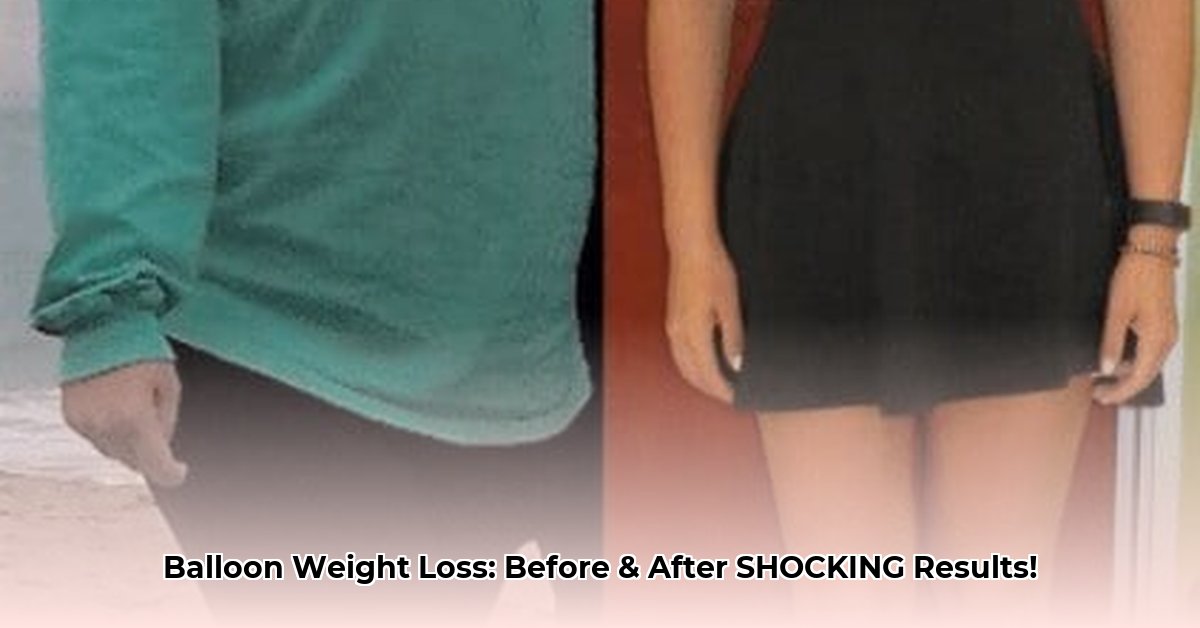
Thinking about gastric balloons for weight loss? This comprehensive guide explores this increasingly popular procedure, detailing the process, risks, benefits, and crucial steps for long-term success. We'll examine different balloon types, ideal candidates, and the importance of lifestyle changes after balloon removal.
Understanding Gastric Balloons
Gastric balloons are temporary devices placed in your stomach to aid weight loss. They work by occupying space, reducing your appetite and leading to decreased food intake. Several types are available, including Orbera, Spatz3, and Obalon, each differing in placement method and duration. Your doctor will help you determine which option is best suited to your needs.
Who is a Good Candidate for Gastric Balloon Weight Loss?
Gastric balloons aren't a magic bullet. They're generally suitable for individuals with a BMI (Body Mass Index) between 30 and 40 who haven't achieved success with other weight-loss methods. Crucially, commitment to long-term lifestyle changes—diet and exercise—is essential. Your physician will evaluate your overall health and suitability during a comprehensive consultation. Are you ready to make a lasting commitment to your health?
The Procedure: What to Expect
Placement is minimally invasive, often taking around 20 minutes. The balloon may be swallowed in capsule form or inserted endoscopically. Most patients can return home the same day or after a short stay. Common, generally mild, side effects include nausea, vomiting, and abdominal discomfort. Serious complications are uncommon but will be discussed in detail by your doctor.
Before & After: Real Results, Responsible Reporting
Gastric balloons can lead to significant weight loss. Before-and-after photos (with patient consent) often illustrate impressive results, with weight loss averaging 10-30% of total body weight. However, individual results vary greatly depending on factors like your starting weight, commitment to lifestyle changes, and underlying health conditions. Remember, these results are averages; your experience may differ.
(Insert before-and-after photos with patient consent and testimonials)
Testimonial 1: "The balloon jump-started my weight loss journey. Combined with healthy eating and exercise, I've lost 45 pounds and feel fantastic!" - Sarah Miller, (Name changed to protect privacy).
Long-Term Success: Sustainable Lifestyle Changes
While gastric balloons provide a significant short-term weight-loss boost, they are temporary. The balloon will be removed eventually. Sustained weight loss relies entirely on adopting and maintaining long-term healthy lifestyle habits. Are you prepared to make sustained adjustments in your diet and exercise regime? Weight regain is highly likely without a commitment to a healthy lifestyle.
The Cost and Insurance Coverage
Gastric balloon procedures typically cost between $6,000 and $9,000, but this can vary widely. Insurance coverage is often limited or nonexistent. Thoroughly discuss financing options and potential out-of-pocket expenses with your healthcare provider before proceeding. Is the financial investment in alignment with your personal budget and financial planning?
Choosing Your Surgeon and Pre/Post-Procedure Care
Selecting a qualified and experienced surgeon is paramount. Look for a board-certified bariatric surgeon with a proven track record. Read online reviews, seek referrals, and ensure you feel comfortable and confident in their abilities.
Before the Procedure: You'll undergo a thorough consultation, potentially including blood work and other tests. Your surgeon will provide dietary guidance and pre-procedure instructions.
After the Procedure: Follow your surgeon's post-operative instructions, including dietary and activity guidelines. Attend all follow-up appointments and promptly report any concerning symptoms.
Maintaining Long-Term Weight Loss Success: A Step-by-Step Guide
- Develop a Sustainable Diet: Work with a registered dietitian to create a personalized plan emphasizing whole, unprocessed foods and portion control.
- Create an Exercise Routine: Aim for at least 30 minutes of moderate-intensity exercise most days of the week. Find activities you enjoy to enhance adherence.
- Build a Support Network: Join a support group or seek an accountability partner. Social support can significantly improve adherence to healthy habits.
Weighing the Pros and Cons
| Pros | Cons |
|---|---|
| Significant short-term weight loss | Temporary solution; requires considerable lifestyle changes for long-term success |
| Minimally invasive procedure | Potential side effects (though most are mild and temporary) |
| Relatively short recovery time | High cost; often limited insurance coverage |
| May improve various health markers | Risk of weight regain without long-term commitment to healthy habits |
Gastric balloons can be an effective tool, but lasting results depend on your commitment. Discuss this option carefully with your healthcare provider to determine if it aligns with your individual needs and goals.